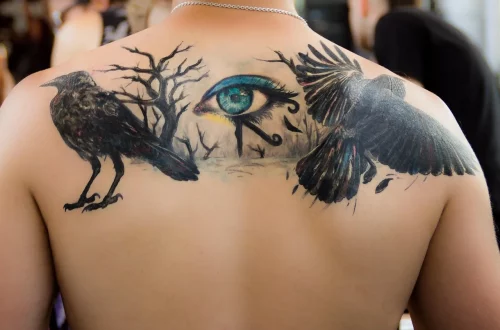
The Ultimate Guide to Merle Great Dane Puppies: Care and Training Tips
Caring for a Merle Great Dane puppy is a rewarding experience that can bring joy and companionship into your life. These magnificent dogs are known for their striking appearance, characterized by a unique coat pattern that sets them apart from other breeds. Merle Great Danes are not just beautiful; they are also intelligent, loyal, and affectionate, making them excellent family pets. However, like any other breed, they require proper care, training, and socialization to thrive.
Bringing a Merle Great Dane puppy into your home is a significant commitment. These dogs grow rapidly and require a dedicated approach to their upbringing. Early socialization and training are crucial for ensuring they develop into well-rounded adults. Their large size means that proper training is essential to prevent behavioral issues, as an untrained Great Dane can easily become overwhelming. Moreover, understanding the specific needs of Merle Great Danes, including health considerations and exercise requirements, will help you provide the best possible environment for your new furry friend.
In this guide, we will delve into various aspects of caring for and training Merle Great Dane puppies, ensuring that you are well-equipped to provide a loving and structured home for your new companion.
Understanding the Merle Coat Pattern
The Merle coat pattern is one of the most distinctive features of Merle Great Danes, often captivating dog lovers with its unique beauty. This pattern is characterized by a mottled or marbled appearance, with patches of color interspersed with lighter shades. The genetics behind the Merle coat involves a specific gene that affects the distribution of pigment in the dog’s fur, leading to this striking visual effect.
However, it is essential to understand that the Merle pattern can also be associated with certain health issues. For instance, Merle dogs may have an increased risk of hearing and vision problems, particularly when bred irresponsibly. Responsible breeders will conduct health screenings and ensure that both parent dogs are free from genetic issues before breeding. When considering a Merle Great Dane puppy, it’s crucial to ask the breeder about health testing and the lineage of the puppy.
In addition to the aesthetic appeal, the Merle pattern can vary significantly from one puppy to another. Some may have a more pronounced pattern with larger patches, while others may have a subtle blend of colors. This variability adds to the charm of Merle Great Danes, making each one unique. It’s important to note that while the Merle pattern is desirable for many, it should never take precedence over the health and temperament of the dog.
Regular grooming is also essential for maintaining the coat of a Merle Great Dane. Although they do not shed excessively, they will benefit from regular brushing to remove loose hair and distribute natural oils. Additionally, routine baths using dog-friendly shampoos will help keep their coat clean and healthy. Proper grooming not only enhances their appearance but also allows you to check for any skin issues or parasites.
Essential Care for Your Great Dane Puppy
Caring for a Merle Great Dane puppy involves several key components that contribute to their overall well-being. One of the most critical aspects is nutrition. Great Danes are large dogs, and their dietary needs differ significantly from smaller breeds. It is vital to provide them with high-quality dog food that is formulated specifically for large breeds. This type of food typically contains the right balance of nutrients to support their growth and prevent common health problems such as hip dysplasia.
In addition to food, monitoring their weight is crucial during their growth phase. Overfeeding can lead to obesity, which puts extra strain on their joints and can lead to serious health issues later in life. Consult with your veterinarian to determine the appropriate portion sizes and feeding schedule. Generally, puppies should be fed three to four times a day, gradually transitioning to two meals a day as they mature.
Exercise is another fundamental aspect of care for Merle Great Danes. Despite their size, these dogs are known for their playful and energetic nature. Regular exercise not only helps them maintain a healthy weight but also provides mental stimulation. Daily walks, playtime in a secure yard, and interactive games are excellent ways to keep your Great Dane physically and mentally engaged.
Socialization is equally important during the early stages of your puppy’s life. Exposing them to various environments, people, and other animals can help them develop into well-adjusted adults. Puppy training classes are an excellent opportunity for socialization, as they allow your puppy to interact with other dogs while learning basic commands.
Lastly, regular veterinary check-ups are essential for monitoring your puppy’s health. Vaccinations, parasite control, and routine health assessments will help ensure that your Merle Great Dane grows into a healthy adult. Staying proactive with veterinary care can prevent potential health issues and keep your furry friend happy.
Training Your Merle Great Dane Puppy
Training is an integral part of raising a Merle Great Dane puppy, and starting early is key to fostering a well-behaved companion. Due to their size, it’s essential to instill good behavior from a young age, as an untrained Great Dane can become difficult to manage. Positive reinforcement is one of the most effective training methods for this breed. This technique involves rewarding desirable behaviors with treats, praise, or playtime, motivating your puppy to repeat those actions.
Basic commands such as sit, stay, come, and down should be prioritized during training sessions. These commands not only help in everyday situations but also promote safety, especially given the Great Dane’s size and strength. Consistency is crucial in training; use the same commands and rewards to reinforce learning. Short, frequent training sessions are more effective than long, tedious ones, as puppies have short attention spans.
Socialization plays a significant role in training as well. Introducing your Merle Great Dane to various people, environments, and animals helps reduce fear and anxiety. The more experiences your puppy has, the more confident and adaptable they will become. Consider enrolling in puppy classes that focus on socialization and basic obedience. These classes provide a controlled environment for your puppy to learn and interact with other dogs.
Addressing behavioral issues early is essential. Great Danes can be prone to separation anxiety and other issues if not properly socialized and trained. If your puppy exhibits unwanted behaviors, such as excessive barking or chewing, it’s vital to address these issues promptly. Redirecting their energy towards positive activities and providing plenty of exercise can help alleviate these problems.
Patience and understanding are essential throughout the training process. Every puppy learns at their own pace, and some may take longer to grasp certain commands than others. Celebrate small victories and remain positive, as this will foster a trusting relationship between you and your Merle Great Dane.
Health Considerations for Merle Great Danes
Health is a paramount concern when it comes to Merle Great Danes. This breed is known for specific health issues that potential owners should be aware of. Some of the most common health problems include hip dysplasia, bloat, and certain genetic conditions associated with the Merle coat.
Hip dysplasia is a hereditary condition that affects many large breeds, including Great Danes. It occurs when the hip joint does not fit properly into the hip socket, leading to pain and mobility issues. Regular veterinary check-ups and maintaining a healthy weight can help reduce the risk of developing hip dysplasia.
Bloat, or gastric torsion, is another serious condition that can affect Great Danes. This life-threatening condition occurs when the stomach fills with gas and twists, leading to restricted blood flow. Signs of bloat include a distended abdomen, restlessness, and excessive drooling. Immediate veterinary attention is crucial if you suspect your dog is experiencing bloat.
Due to the Merle gene, these dogs can also be prone to certain genetic issues such as deafness and eye problems. Responsible breeding practices can help mitigate these risks, so it’s essential to choose a reputable breeder who conducts health testing on their breeding dogs. Always ask for health clearances and be aware of the genetic history of your puppy’s lineage.
Regular veterinary visits are critical for monitoring your Merle Great Dane’s health. Vaccinations, routine examinations, and preventative care will help ensure your puppy grows up healthy and strong. Your veterinarian can also provide guidance on diet, exercise, and any breed-specific concerns you should keep in mind.
In conclusion, while Merle Great Danes are stunning and loving companions, they come with specific care requirements and health considerations. By providing proper nutrition, training, and routine veterinary care, you can help your Merle Great Dane thrive and become a cherished member of your family.
**Disclaimer:** This article is for informational purposes only and is not intended as medical advice. Always consult with a veterinarian for health-related questions or concerns regarding your pet.




